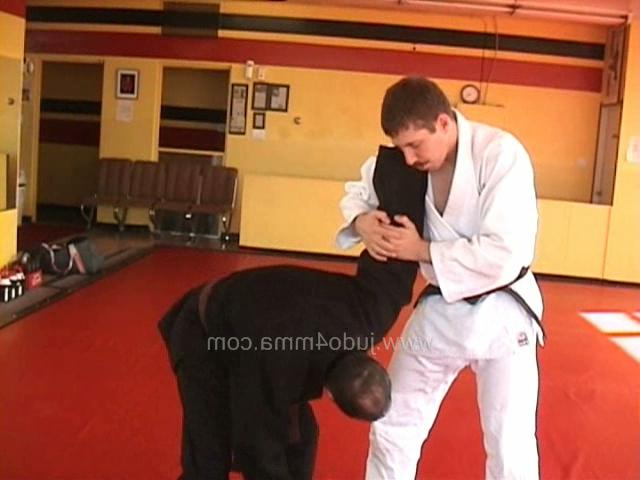| Steps 18-22 of pattern Yoo-Sin |
The low-to-high X-block set in Yoo-Sin is sampled from the kata Heian Godan, with some minor alterations. More noteworthy is the absence of the twisting palms in modern Yoo-Sin, which are present in Heian Godan and 1965 Yoo-Sin. Instead, we now perform the reverse punch bringing the front palm onto the punching arm's elbow joint; in 1965 it was just a reverse punch. I've noticed many ITF students practice the twisting hands anyway even though they are not a part of the official instructions.
You can see the set from Heian Godan below:
 |
| Gif source: centralmnkarate |
And an older variation from Pinan Godan, which drops the palms before striking with a hammerfist
 |
| Gif source: KaaLel |
 |
| Iain Abernethy demonstrating the wrist grab defense. Source: Practical Kata Bunkai |
This application is... okay. I'm not a big fan because there are so many faster ways to clear a wrist grab. I also find that this kind of elbow lock (called ikkyo in Aikido) rarely works without body movement. That's not to say it isn't the intended application for Heian Godan; maybe it is. Certainly you could use it for Yoo-Sin. The left palm would still be controlling the opponent's elbow while you punch their downed head.
| Punching while still pushing the opponent's elbow. The true use of this movement from Yoo-Sin? |
However, looking at the older set from Pinan Godan, another application comes to mind. Is it possible this set was intended as a shoulder lock? If so, we can apply the downward pressing palms as a standing ude hishigi ude gatame
| Application for Pinan Godan sequence. Apply outward hammerfist to back of opponent's head. Top images source: Emilio Merayo |
To break this application into pieces:
- We apply the X-fist pressing block as a hammerlock, pulling the opponent's shoulder down with the right fist while forcing their arm behind their back with the left fist. This application is shown in the Encyclopedia of Taekwon-Do, pictured below
2. Circle your right arm under your opponent's left arm and then upwards into the X-knifehand rising block. Your left knifehand also rises so that it can come down on the opponent's elbow. You can see a video of this technique here.
3. Keeping the opponent's forearm on your right shoulder, push down into the opponent's elbow with both palms, locking their arm.
4. Follow with a strike. In Pinan Godan, we perform a left outward hammerfist to the back of the opponent's head. In Yoo-Sin, we maintain the lock with our left palm while punching the back of the opponent's head with the right fist.
I like this more than the wrist grab defense, and it also works for 1983
Yoo-Sin since (1) we use the preceding two moves (the palm hooking
block followed by the punch) to parry and grab the opponent's left arm,
meaning that is the arm we will attack, (2) we do not strictly need the twisting
palms [see footnote], which is not in the modern Yoo-Sin instructions, and (3) your left palm maintains the elbow lock while you punch
the back of the opponent's head. If your opponent's head is too far to hit, we follow with the front kick and land in reverse punch in Yoo-Sin.
 |
| Judo player demonstrating ude hishigi ude gatame. Source: www.judo4mma.com |
[Footnote 1] I feel I should mention the twisting palms still have an application in this instance. By first twisting left, you are rolling the opponent's forearm onto your shoulder. By twisting back right, you place your left palm on the back of their elbow.
No comments:
Post a Comment